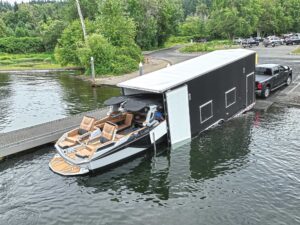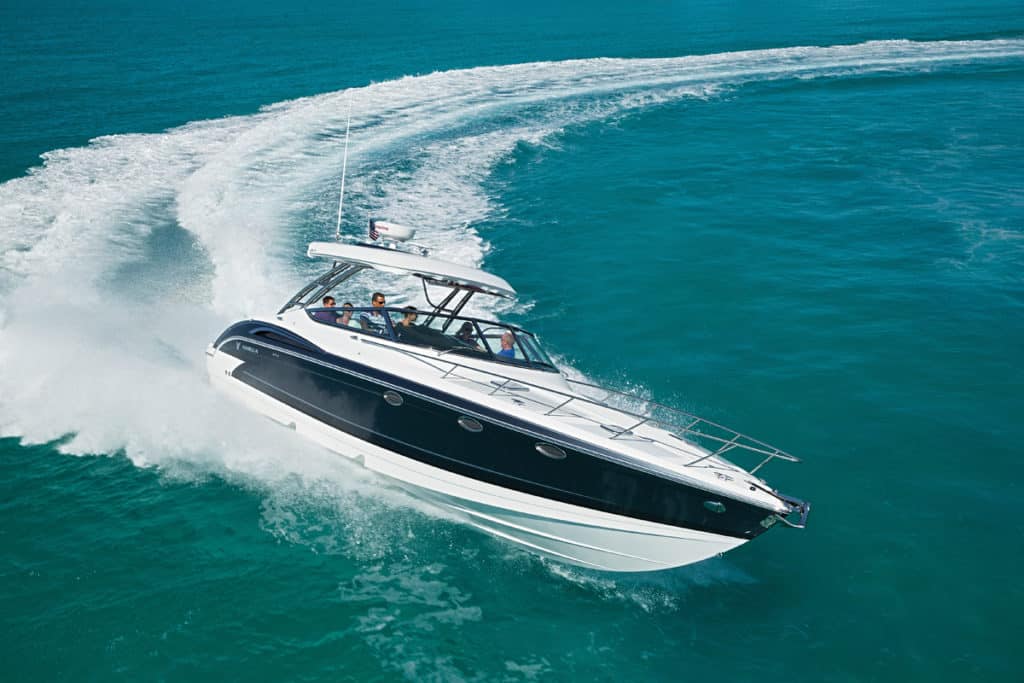
The first time I ran a boat with a step hull, I was a bundle of nerves, my mind abuzz with stories of stepped racing hulls, throttles pinned, the driver hanging onto the ragged edge of control, each high-speed run fraught with the potential for disastrous spinouts or a stuffing of the bow.
My test boat, however, was no racing machine. Rather it was a Contender 35ST center-console saltwater fishing boat powered by triple 300 hp outboards. The ride was indeed exhilarating, but the boat also proved delightfully easy to drive, eventually quelling my case of nerves.
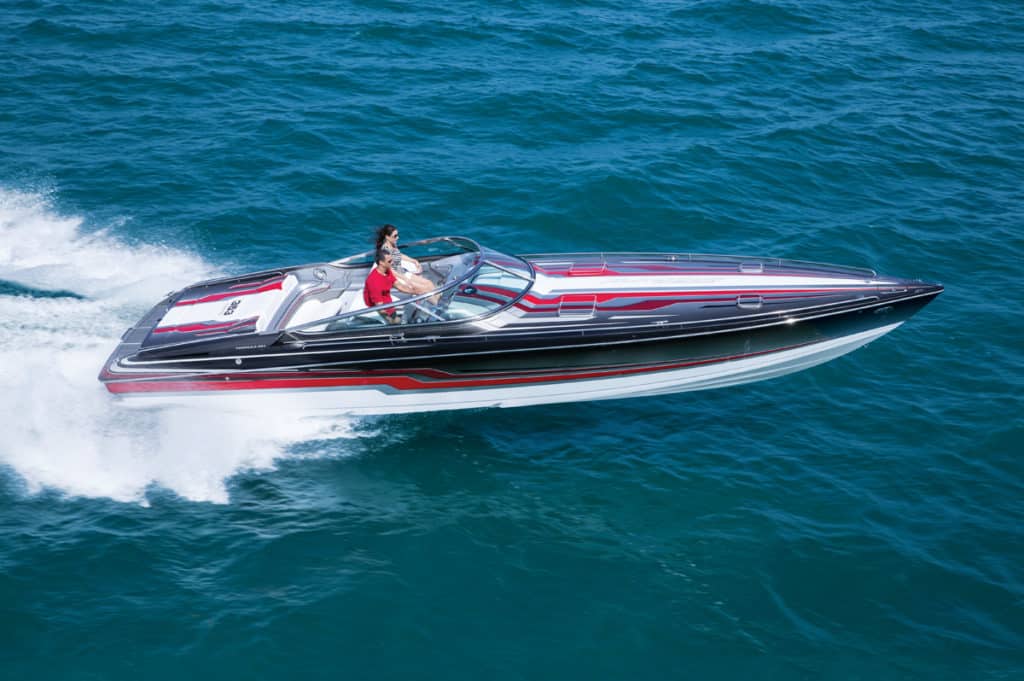
Formula’s step hulls need 35 mph of speed to generate efficiency advantages over a conventional V-hull, Adams says. “At 60 and above, the benefits really start to kick in.” “At the same time, you can run our step hull at slower planing speeds (than a comparable V-hull’s) because the boat remains more level,” Adams reveals. SeaVee’s Z-hull requires less speed to realize benefits, says Rob Kaidy, vice president of engineering and chief naval architect for SeaVee Boats. The lifting effect is present at all speeds, Kaidy says, “so the nature of the stepped hull is to produce improvement in efficiency over the entire speed range, not just at higher velocities.” In a Boating certified test, the SeaVee 390Z planed at speeds as low as 15 mph (2,500 rpm with triple Yamaha F350 outboards). Formula Boats
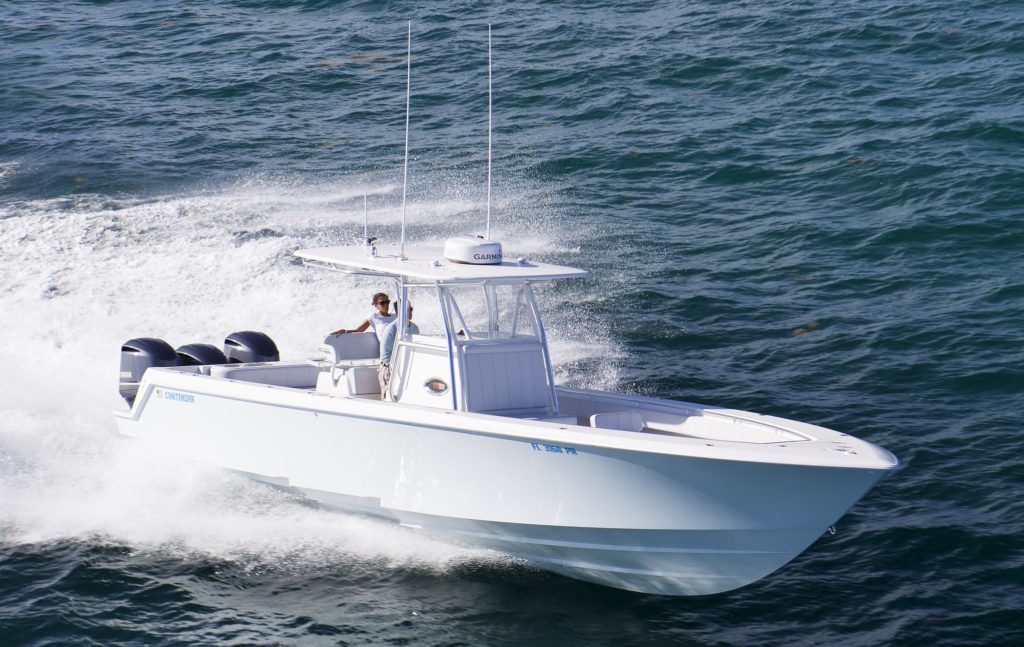
“Because a stepped hull runs through the water differently (from a conventional V-hull) and has less of the boat in the water, step placement and weight distribution become very important,” says Chris Becker, naval architect for Contender Boats. This means that a designer needs enough linear space to work with in order to get the dimensions and ratios correct, especially if there are two steps. “A twin-step hull acts almost like three hulls following closely together,” Becker adds. Ultimately, it is difficult to create three planing surfaces from one small one. “Sometimes there is just not enough planing surface to work with.” In the Contender line, the smallest step hull is the 25 Bay. In the Formula line, it is the 292FAS3Tech, and at SeaVee it’s the 270Z. Contender Boats
Even at wide-open throttle across 3-foot seas, the step hull never exhibited a hint of instability. High-speed turns were smooth and predictable. On down-sea runs, the bow refused to dip or stuff into the backside of a wave.
Yet, what impressed me most was the amount of lift and the remarkably level and consistent trim angle, not only during hole shot, when many V-hulls tend to ride bow high, but also as the hull traversed the seas.
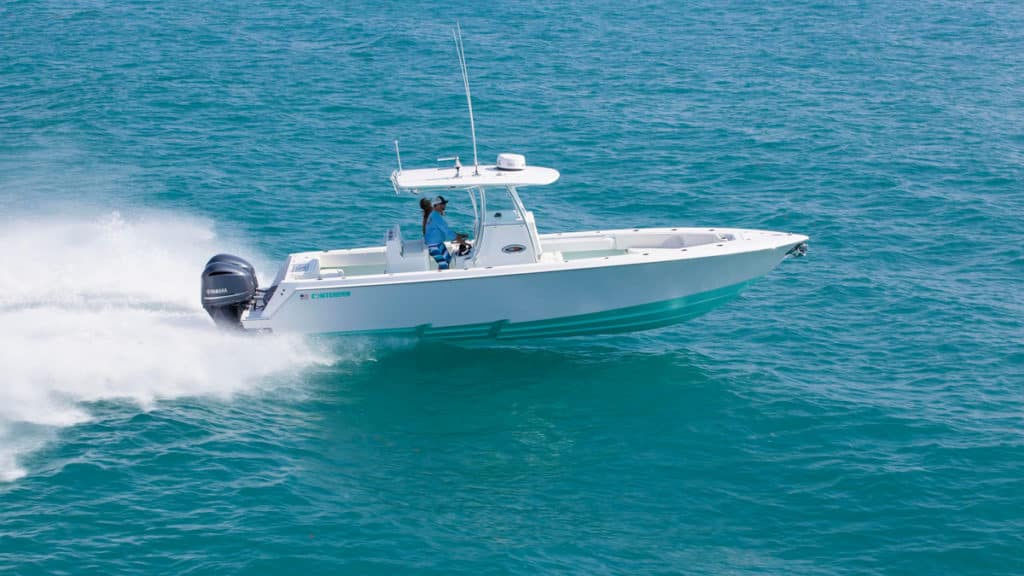
Properly designed step hulls definitely improve the hole shot experience. The lifting properties keep the trim angle relatively level and consistent as the boat accelerates from a dead stop. It relieves the annoying and potentially hazardous bow-rise characteristic of some V-hulls as they climb out of the hole. Yet, claims of quicker acceleration times for step hulls prove challenging to substantiate, because there are few, if any, apples-to-apples comparisons. The closest we could find were a pair of Yamaha performance bulletins with data for the Contender 33 Tournament (with a conventional V-hull) and the Contender 33 ST (with a step hull), both powered by twin Yamaha F350 outboards. Times to plane were virtually the same, though the ST was a quarter-second faster to 30 mph. Contender Boats
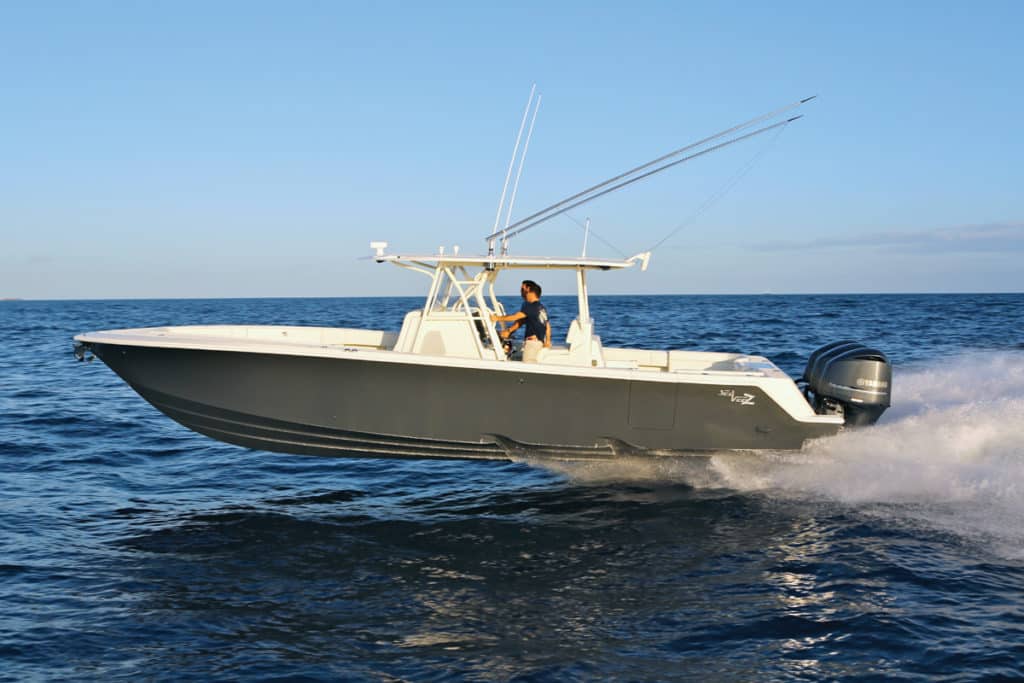
“On hulls with two steps and three distinct planing surfaces — one each in the bow, midhull and stern — the proportion of lifting pressure shared between the planes helps determine the performance characteristics,” says Adams. “Ratios of the high pressure points must be carefully placed,” he explains. Too much at the midhull plane, for example, can lead to spinouts in a turn. Too little pressure in the bow can lead to stuffing. There are no ideal proportions for lift, because each design depends on the boat’s weight distribution and the desired performance characteristics. A ratio that produces more speed, for instance, might compromise stability, Adams points out. Yet generally speaking, bow lift should be minimal, midplane a bit more and aft-plane the most, he says. SeaVee Boats
Today, a wide range of boat companies offers step-hull models. Some, like Intrepid and Invincible Boats, build only step hulls. Other companies such as Grady-White have refrained from entering the step-hull market.
And then there are companies that offer both, including Contender, Formula and SeaVee. These are the three companies we tapped in the hope of gaining the most unbiased insight possible about the benefits — and disadvantages — of step hulls.
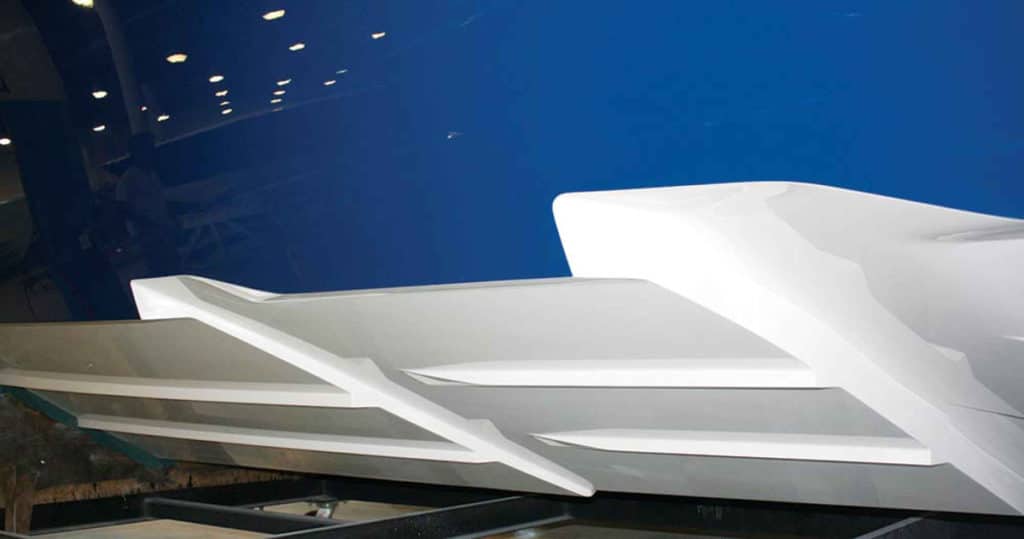
“Because a properly designed step hull inherently runs at its optimal trim angle, there is less need to adjust the trim with the drives, outboards or trim tabs,” Adams says. “The boat takes over the responsibility for trim. It can almost make you lazy because you don’t have to tweak the trim.” A step hull tends to hold its trim angle steady, rather than oscillating in response to the sea state, as does a conventional V-hull. This is true during acceleration and deceleration, as well as while underway. “You can chop the throttle, and the bow stays flat instead of diving like a conventional V-hull,” Adams adds. “Optimum trim angle for our step hull is about 3.6 to 4.2 degrees, which is relatively constant over all planing speeds” SeaVee’s Kaidy says. Step hulls also tend to be self-correcting when it comes to roll. The lifting effect helps maintain an even keel, as well as optimum trim, Adams explains. They are less likely to heel over while underway. SeaVee Boats
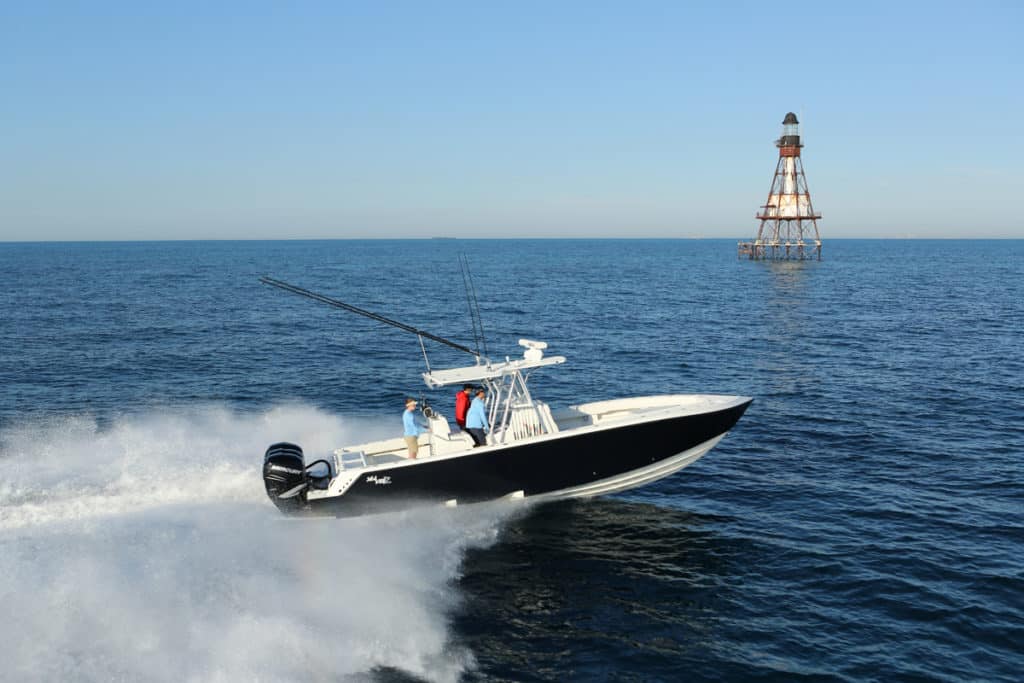
As with acceleration, few valid speed comparisons exist between comparable V-hulls and step hulls. While some builders claim up to 15 percent increases in top speed, Adams downplays this. “You can get enamored of the speed gains; it can be impressive,” he explains. “But we’ve been willing to sacrifice some speed in order to bolster stability. As a result, we are picking up just 2 to 3 mph at the top end, and we are happy with that.” Contender has achieved greater improvements, according to the Yamaha performance bulletins on the identically powered Contender 33 ST and Contender 33 Tournament. With a top speed of 66 mph, the step hull bested the conventional V-hull by 6.8 mph — 11.4 percent faster at the top end. While Contender and SeaVee allude to mileage improvements of up to 20 percent, we’ve found it difficult to confirm such claims. In the Yamaha performance bulletins, the Contender 33 ST and 33 Tournament achieved similar best-fuel-economy numbers. At 3,500 rpm, the 33 ST achieved 1.58 mpg, burning 22.2 gph at 35.1 mph. The 33 Tournament got 1.48 mpg at the same rpm, consuming 20.6 gph at 30.5 mph. SeaVee Boats
Nothing New
Accounts of step-hull boats date back to the early 1900s. Yet the modern step hull did not take shape until go-fast boatbuilders like Fountain and recreational brands such as Larson popularized them in the 1990s.
Boatbuilders discovered that step hulls improve efficiency and boost speed by ushering a cushion of aerated water under the running surface (see “Step-Hull Dynamics”). But there were also problems. Some early high-performance designs proved unpredictable or required a high degree of driving skill to avoid catching an edge or dipping the bow and swapping ends, or submarining into a wave.
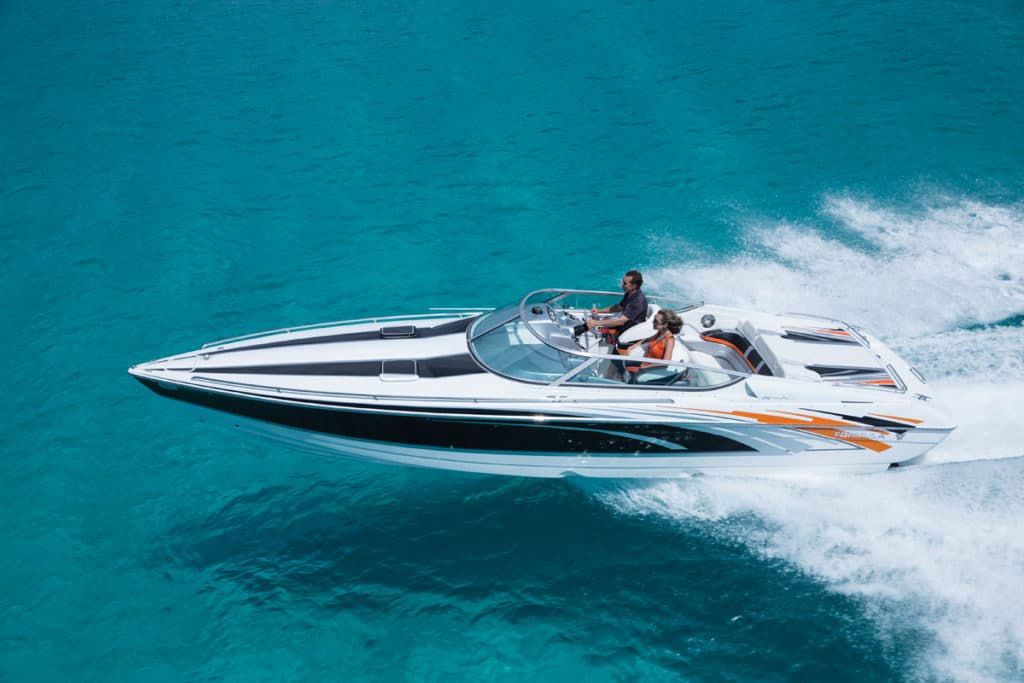
If you want a step hull, you have three choices in power — outboards, sterndrives or surface drives. “Stepped-hull underwater flow is mixed with air,” Kaidy explains. “Outboard engines are highly suited to operating in this mixed-flow environment. Certain sterndrives also work in this application. “Surface-drive systems work great for stepped hulls, but there’s very little customer demand for such systems,” says Kaidy. With pod drives and inboards, however, efficiency relies on getting clean water flow to the propellers, and that runs contrary to the hydrodynamics on which step hulls rely, he points out. Formula Boats
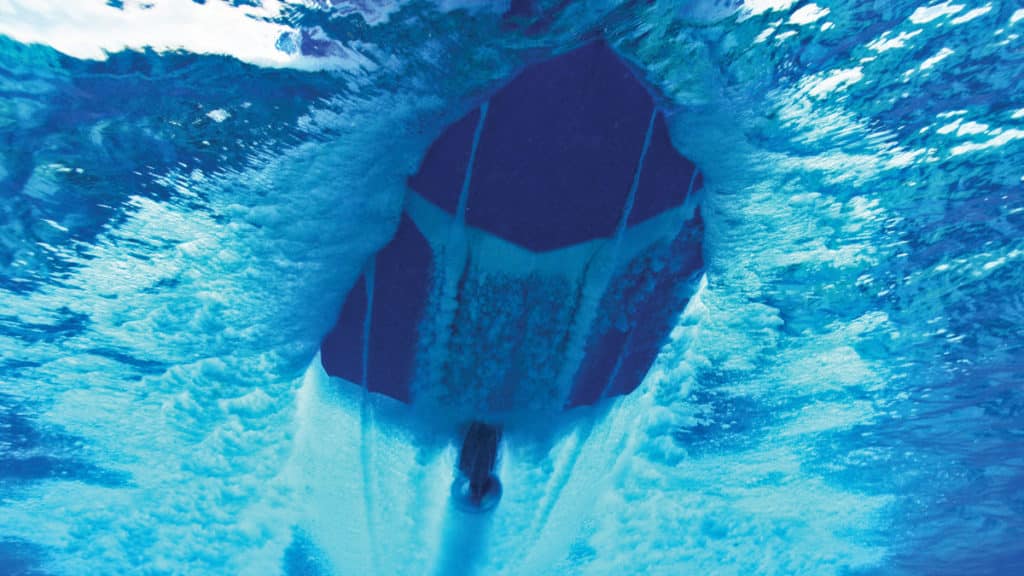
“Because of the large amount of water disturbance under a step hull, you need to rethink where to install the transducer for your fish finder,” Becker says. Transom-mount transducers just won’t work properly, because aerated water generates interference as it flows across the face of the ’ducer. Traditionally, through-hull or shoot-through-hull transducers are positioned as far aft as possible, but on a step hull, it is necessary to install these just forward of the first step. This keeps the transducer in relatively clean water. Because the step hull rides relatively flat, the transducer is able to operate properly. Regal Boats
Most high-performance step hulls are safer today, thanks to refinements that have squelched much of the quirkiness while maintaining the penchant for speed.
Unfortunately, with the Great Recession, sales of offshore go-fast boats took a serious hit, with the recovery of this segment still underway. Yet step-hull designs have also emerged in a growing number of less-exotic models, from bay boats and center-consoles to cruisers and runabouts.
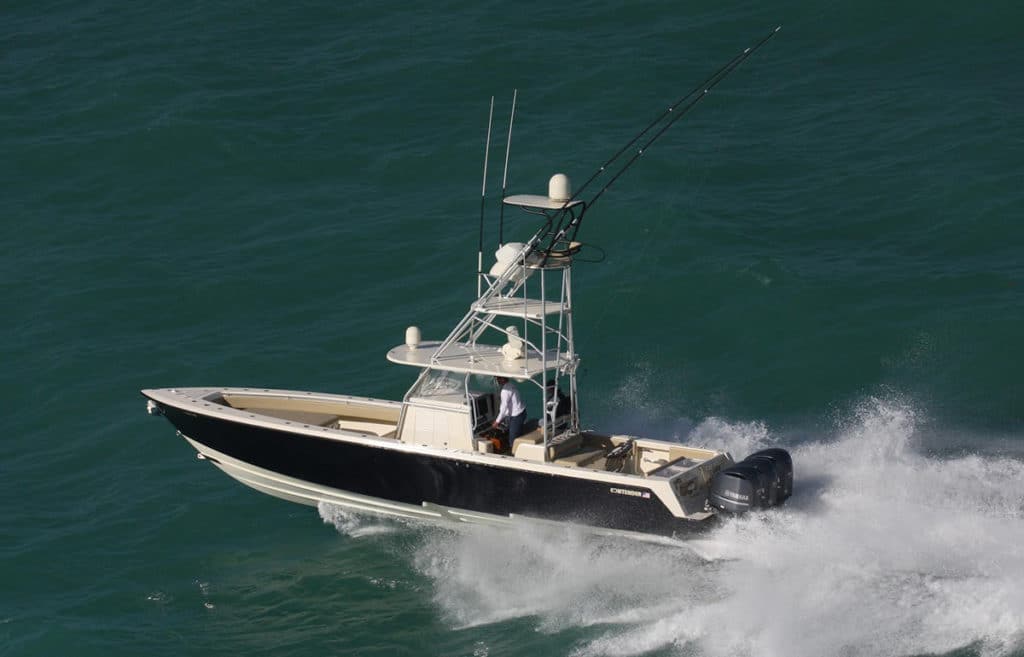
In setting up outboard or sterndrive power for a step hull, finding the correct combination of engine/drive height, setback and propping can be more time-consuming than with a nonstepped hull due to the nature of aerated water flowing from under the boat. The good news is that the boatbuilder fine-tunes all of this for each model. Propeller design represents one of the areas of greatest development. “With new highly cupped designs and four-blade models, propellers stay hooked up in the difficult conditions behind the transom better than ever,” Kaidy says. Contender Boats
“We originally developed our step-hull designs for the Formula FasTech high-performance offshore series around 1995,” says John Adams, exclusive designer for Formula Boats.
“It started out as a speed enhancement,” he adds, “but increased stability at speed (known as “dynamic stability”) was an unexpected benefit. Our step hulls turned out to be even more stable than conventional V-hulls.”
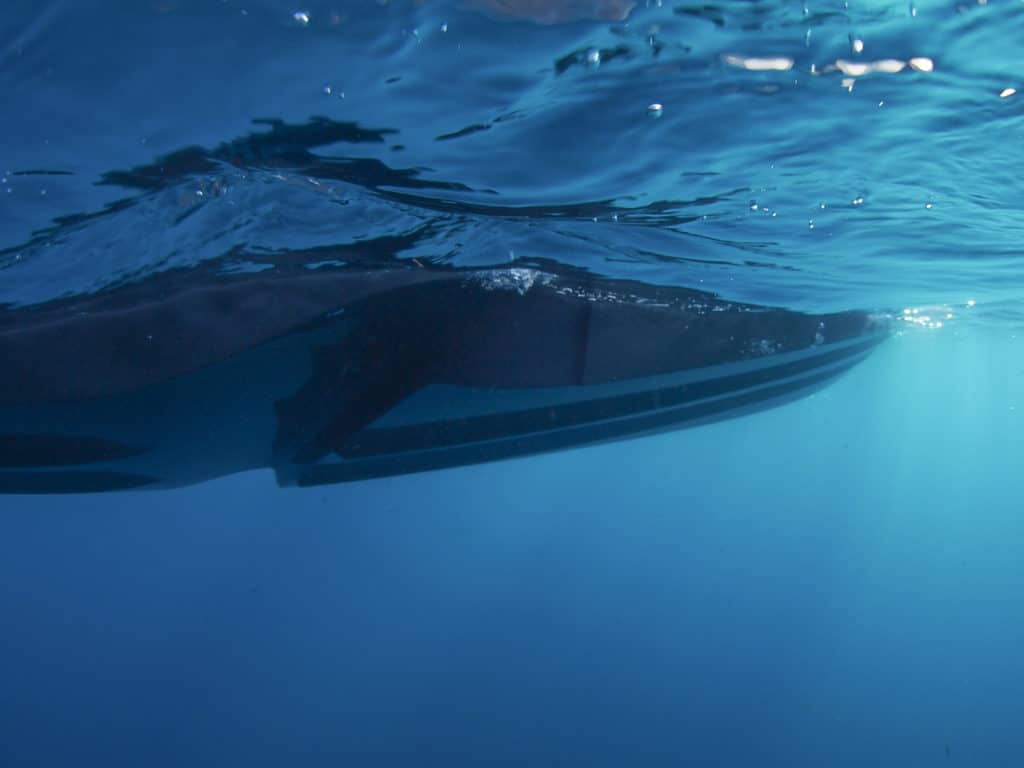
Boats may have a number of through-hull water pickups for the purposes of engine cooling, air conditioners, livewells and more. The problem is that step hulls can feed aerated water to the pickups’ plumbing and pumps, which can lead to air locks that block the flow and cause the machinery to overheat. As with a transducer, the solution is to install the pickups in front of the first step to help ensure a supply of clean water. With livewells, a second solution has emerged: A special pump box in the bilge accumulates water and purges air from the system to feed one or more bilge pumps, contained inside the box, that in turn supply water to the livewell system. SeaVee Boats
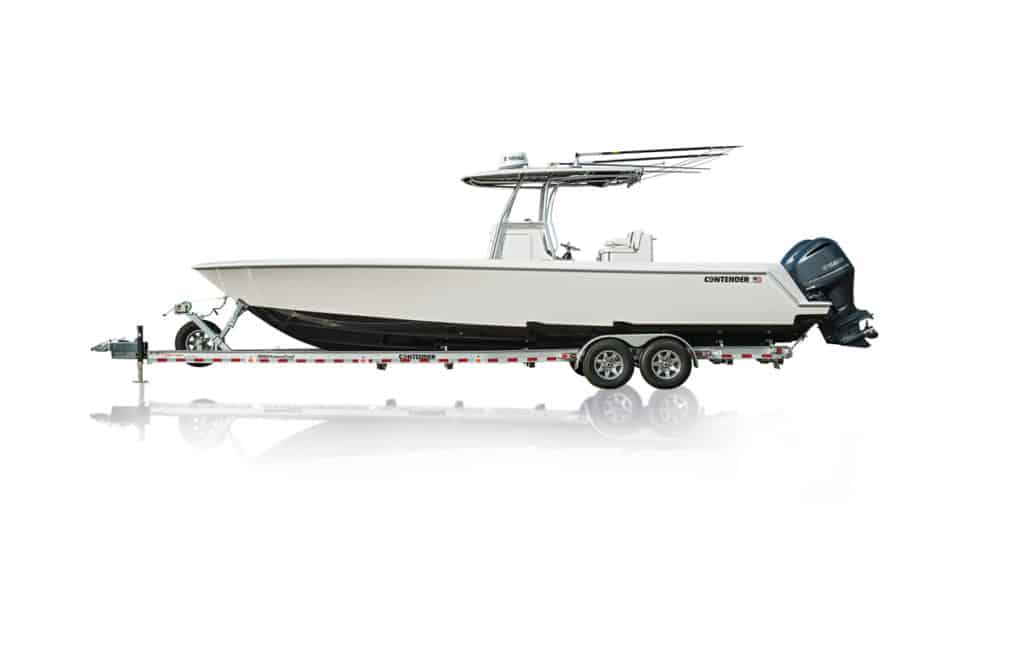
If you’re used to sliding your boat off and onto a trailer, a step hull might confound you. First make sure the trailer is designed to correctly support the unique structures and surfaces of your step hull. Bunk trailers are preferred over roller trailers for this type of running surface. When launching, the steps act like the barbs on a fishing hook, refusing to slide backward and instead digging into carpeted bunks. The solution is to float the boat as much as possible, making sure the steps are clear of the bunks before backing the boat off of the trailer. In loading the boat, submerge the trailer just enough to allow you to capture the front of the boat on the forward bunks and hook the winch strap to the bow eye, while allowing the steps to float just above the rear bunks. As you slowly pull the trailer out of the water, the remaining portion of the hull should be nestled into the cradle of bunk supports. Bill Doster
The new step hulls were so efficient and easy to handle that Formula eventually incorporated the same design features into the Super Sport express cruisers series.
The company is witnessing strong growth in the popularity of step hulls; its best-selling models are the 400 and 370 Super Sport (both step hulls), though Adams points out that the company still builds more conventional V-hulls than step hulls.
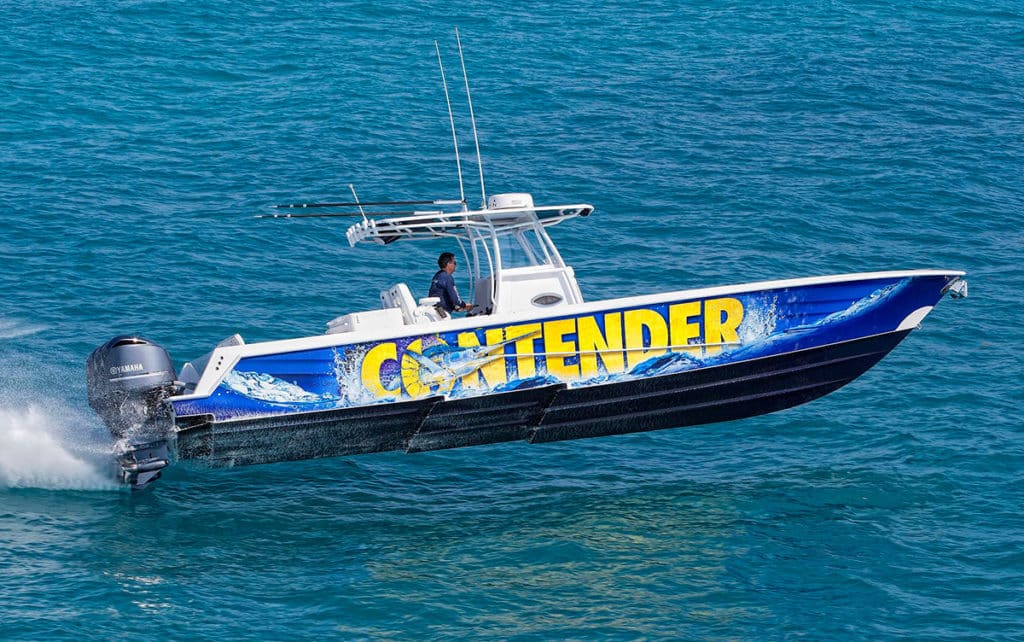
“Step hulls cost more to build than conventional V-hulls — with good reason,” Kaidy says. “The hulls are more complex to mold and laminate, and that is more expensive.” While Kaidy and Adams characterize the additional cost as modest, Becker is a bit more specific. “There is roughly a 7 percent difference in hull cost between a conventional and stepped hull,” he says. In the end, boaters have little to fear and much to gain from well-designed step hulls. An increasing number will appear on the market in the coming years, offering increased efficiency, greater stability, a more comfortable ride and a boost in speed. Yes, step hulls will cost a bit more and you’ll need to rethink some long-held principles about transducers and trailers, but there might come a time when we look back and say “Remember the days before step hulls? It’s tough to imagine running anything else.” Contender Boats

Step hulls reduce the amount of running surface in contact with the water by ushering a cushion of aerated water under the hull via one or more transverse indents known as steps (A). The aerated water also exerts upward pressure (B) on running surfaces (C) to lift the hull, maintain a consistent trim angle and boost efficiency when the boat is on plane. All other things being equal, this can result in higher speeds — some estimates run 10 to 15 percent higher — versus a conventional V-hull. Efficiency can also translate to better mileage and range, important considerations in long-range cruising and offshore fishing. Steve Karp
At Contender and SeaVee, demand for step hulls is skyrocketing. Both report that step hulls (ST and Z-series, respectively) now represent 90 percent of sales.
Does that mean that you will own a step hull in the future, if not already? Not necessarily. Your choice hinges on boat size, power selection, speed and other factors. Even in applications where step hulls excel, there are downsides to consider.

